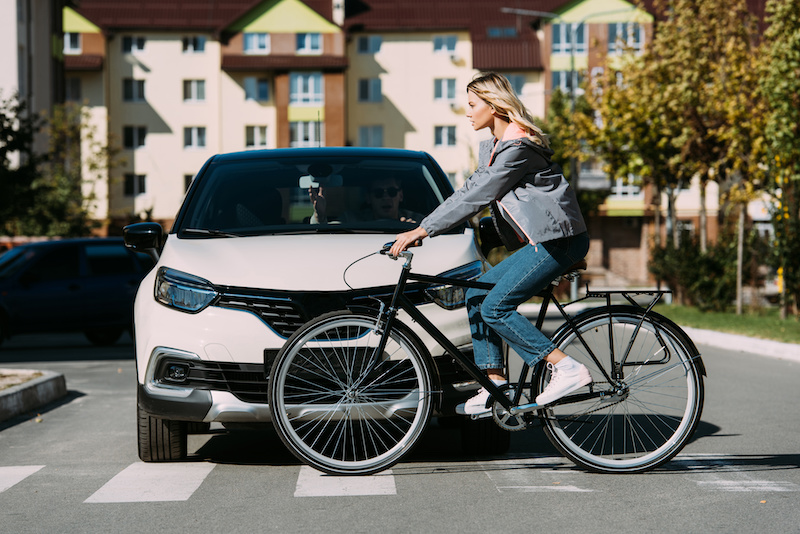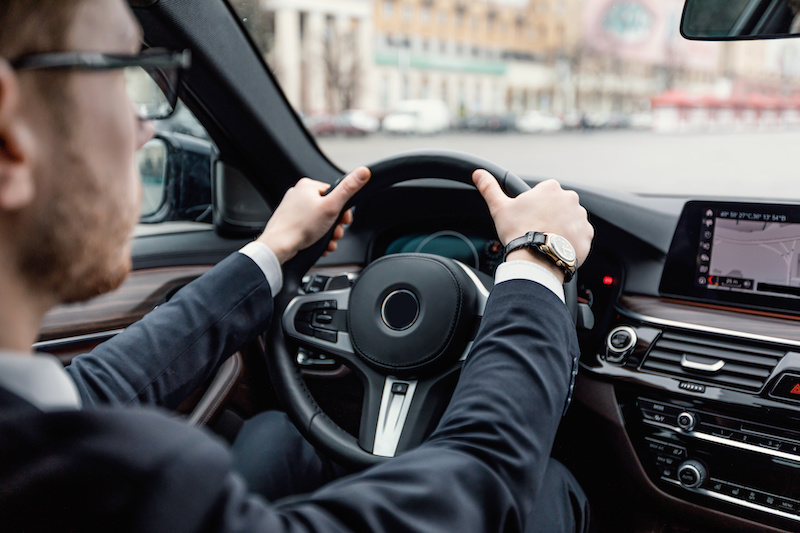The legal responsibilities of drivers are not just about obeying traffic rules and regulations.
Indeed, it goes beyond that. It’s also about ensuring the safety of everyone on the road including bicyclists and pedestrians.
The truth is, if you’re behind the wheel, your responsibility doubles up. You must be constantly alert.
Neglecting these legal responsibilities as a driver can lead to severe consequences. Not only could you face penalties or jail time but also put innocent lives at risk.
Table Of Contents:
- Understanding the Laws Governing Road Sharing
- Follow Traffic Signals and Speed Limits
- Sharing the Road: Legal Responsibilities of Drivers Towards Bicyclists and Pedestrians
Understanding the Laws Governing Road Sharing
Driving isn’t just about getting from point A to point B. Navigating the streets with other people, including pedestrians and cyclists, necessitates that drivers learn how to share space responsibly and in accordance with applicable regulations.
In order to navigate this shared environment safely and legally, it is crucial for drivers to be well-versed in road-sharing laws. But where do you start?
Dive Into Your State’s Traffic Laws
Your journey begins with your state’s traffic laws. Each state has its own set of regulations pertaining to how roads should be shared – everything from bicyclist right-of-way rules to pedestrian crossing guidelines or specifics on overtaking bicycles safely.
Being aware of these regulations not only keeps you out of legal difficulty but also ensures the roads are secure for all those who utilize them.
The Power of Defensive Driving
Surely defensive driving techniques have crossed your radar before? These skills are key when it comes to avoiding accidents while sharing the road. The idea here is simple: anticipate potential problems before they occur and adjust your behavior accordingly.
For instance, understanding that cyclists or pedestrians might be more vulnerable can guide how we approach them on the road.
Road Signs and Markings Are There For a Reason
You’ve seen those symbols painted on the asphalt or signs posted by the roadside – they’re there for a reason. They help guide motorists in navigating shared spaces safely.
Whether it’s identifying bike lanes marked by specific icons or comprehending different crosswalk lines that signal pedestrian rights, every sign plays an important role.
To gain deeper insights into this topic, consider resources like the Manual on Uniform Traffic Control Devices (MUTCD).
Follow Traffic Signals and Speed Limits
So how do we minimize accidents involving both cyclists and pedestrians? One effective way is by strictly adhering to traffic signals and speed limits – essential rules that are often overlooked with severe consequences.
Traffic signals play a crucial role in managing movement at intersections, ensuring that all road users know when it’s their turn to proceed. Ignoring these can lead to chaos or even tragic accidents. According to The National Highway Traffic Safety Administration (NHTSA), running red lights ranks high among the causes of urban crashes in America.
The Role of Speed Limits
Beyond simply observing traffic lights, strict adherence to speed limits forms another pillar for secure driving practices. Despite common misconceptions about speeding saving time, research indicates that higher speeds correlate with increased accident risk.
Speed limit signs aren’t merely suggestions; they reflect careful considerations such as prevalent road conditions, types of vehicles frequenting the route, and pedestrian presence among other factors which are evaluated before setting an appropriate maximum speed limit for each particular area.
The Importance Of Respecting Road Rules
Apart from avoiding penalties like fines or license suspension issued by agencies like the Florida Highway Safety and Motor Vehicles (DMV), there’s a bigger picture behind compliance with traffic laws: enhancing safety on our streets.
Obedience breeds predictability – other motorists can anticipate your actions more accurately if you follow established norms reducing chances where sudden evasive maneuvers cause panic reactions, often leading to mishaps.
Now let’s explore further how drivers should interact with non-motorized travelers like bikers or pedestrians to ensure everyone reaches their destinations safely.
Give Bicyclists and Pedestrians Ample Space
Driving entails more than just operating the wheel and pedals; it’s also about providing bicyclists, pedestrians, and other vulnerable parties with adequate space.
This isn’t just about legal responsibilities but also respecting everyone’s right to use public roads safely. For instance, the NHTSA advises drivers to maintain at least three feet of distance while passing cyclists – similar to providing ample white space between text blocks for better readability.
Right-of-way laws typically favor non-motorized travelers due to their vulnerability compared to motor vehicles; however, compliance should be driven by empathy rather than fear of penalties.
Unmasking the Hidden Dangers: Blind Spots
The onus of driving requires being conscious of and exercising precaution with respect to the blind spots that come along with your vehicle.
A Glimpse into the Perils of Overlooking Blind Spots
Blind spots are those elusive areas surrounding a vehicle that escape direct view when you’re looking straight ahead or through either rear-view or side mirrors. Neglecting to check these regions can lead to dire consequences, particularly involving unsuspecting cyclists and pedestrians who may be hidden from conventional viewpoints.
Data gathered by the National Highway Traffic Safety Administration (NHTSA) reveal that overlooking blind spots has been a significant contributor to numerous traffic incidents in recent years. Therefore, this issue must be addressed promptly in order to protect drivers and other road users – especially those who are more vulnerable.
Your Roadmap to Checking Blind Spots Effectively
To minimize the risks associated with blind spots, there are certain best practices that every driver should follow. First and foremost, adjusting all mirrors properly before embarking on any journey is key, as it provides wider coverage around your car.
In addition to using mirrors effectively, making an ‘over-the-shoulder’ glance when changing lanes or turning could potentially save lives by revealing any hidden dangers lurking in those unseen areas.
Leveraging Technology: A Step Forward
New advancements in automotive technology have brought forth features designed specifically to address issues related to blind spots, such as rearview cameras and sensor-based systems that provide alerts whenever objects get too close for comfort. Nonetheless, it is still important not to over-rely on these innovations and still use best practices to ensure maximum safety.
Moving forward to our next topic about yielding right-of-way, the understanding and application of knowledge from both topics significantly contribute to safer roads for everyone.
Sharing the Road: Legal Responsibilities of Drivers Towards Bicyclists and Pedestrians
When it comes to driving, it’s not just about speed limits and stop signs. As drivers, we must take care to ensure the safety of all road users, especially those who are more vulnerable such as bicyclists and pedestrians. As drivers, it is our legal obligation to give way when needed in order to avoid collisions and protect others.
“Intersections or crosswalks are critical areas where drivers need to be vigilant.”
– Silver Injury Law Expert Advice
Understanding and following this rule not only benefits others on the road but also protects us from potential legal issues that may arise due to negligence.

A Deeper Look into Yielding Right-of-Way
Giving up the street isn’t just a graciousness, but an essential rule that applies to all who utilize it. It means acknowledging the presence of others, including those who lack the protection of a vehicle. By recognizing their vulnerability, we can ensure their safety, promote respectful driving habits, and avoid any unpleasant encounters with law enforcement officials for failing to comply with traffic regulations.
- Recognizing their vulnerability helps ensure their safety.
- Promoting respectful driving habits.
- Avoiding any unpleasant run-ins with law enforcement officials over failure to comply with traffic regulations.
Here’s an insightful article on pedestrian safety worth reading.
Situations Where Drivers Should Yield
There are numerous instances where a driver must yield, including, of course at a “yield” sign, but also at crosswalks, when turning left, when getting out of a parking spot, and more.
Tips To Safely Share The Road With Bicycles And Pedestrians
- Patiently trailing behind cyclists until safe overtaking opportunities present themselves.
- Avoid unnecessary honking near bikers who might get startled & lose control of their vehicle.
- Check before opening car doors alongside busy sidewalks so that cyclists and pedestrians don’t accidentally collide with them.
Moreover, drivers must consistently follow safety norms irrespective of different road conditions.
Next, we will expound on the importance of understanding blind spots around your vehicle which can conceal unsuspecting walkers & riders from your field of vision.
If you’ve been involved in an accident due to someone failing their legal duties on the road, Silver Injury Law can help navigate your personal injury claim with expertise and compassion. Our firm specializes in personal injury law with a focus on road accidents, ensuring that you receive the compensation you deserve.




